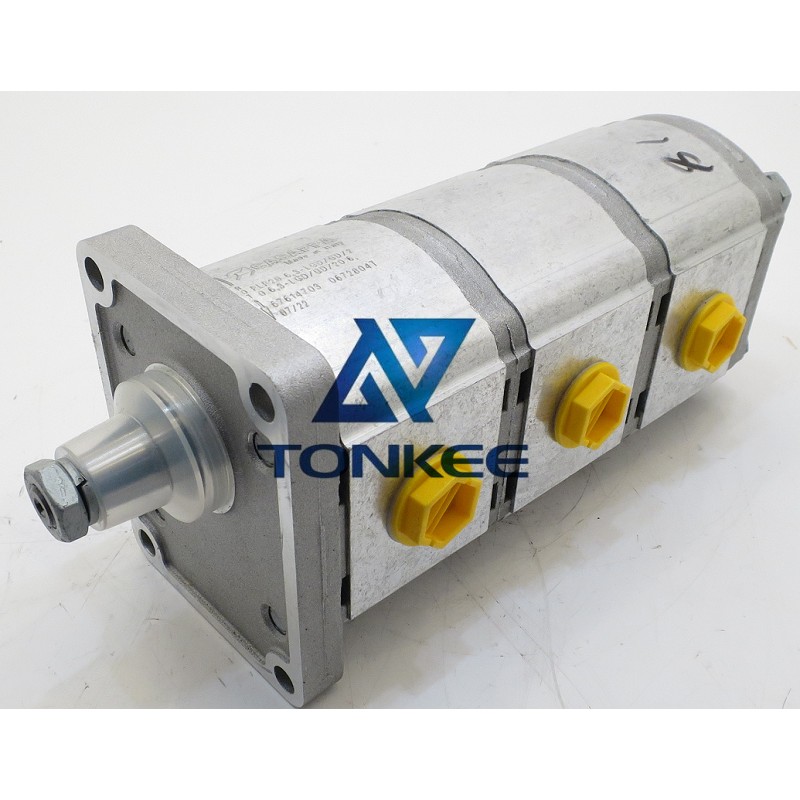
Flow Rate: The flow rate of a hydraulic gear pump indicates how much hydraulic fluid it can move in a given amount of time, typically measured in gallons per minute (GPM) or liters per minute (LPM).
This specification is crucial to ensure that the pump can meet the hydraulic system's requirements.
Pressure Rating: Hydraulic systems operate under different pressure levels, so it's important to match the pump's pressure rating with the system's requirements. Pressure ratings are usually expressed in pounds per square inch (PSI) or bars.
Size and Mounting: The physical dimensions and mounting options of the pump should be compatible with the available space and installation requirements in your hydraulic system.
Construction Material: Hydraulic gear pumps are often constructed from materials like cast iron, aluminum, or stainless steel. The choice of material affects the pump's durability, resistance to corrosion, and suitability for specific applications.
Shaft Rotation: Hydraulic gear pumps can be designed for clockwise or counterclockwise shaft rotation. This must match the direction required by your system.
Shaft Type: The type of shaft (e.g., splined or keyed) can vary and must match the requirements of your system's couplings or connections.
Seal Type: Hydraulic gear pumps may use various types of seals, such as lip seals or mechanical seals, to prevent fluid leakage.
The choice of seal type can impact pump performance and maintenance requirements.
Temperature Range: Consider the temperature range within which the pump will operate. Some applications may require pumps designed for high-temperature or low-temperature conditions.
Noise Level: Noise can be a factor in certain applications. Quieter pumps are preferred in environments where noise reduction is a concern.
Efficiency: Hydraulic gear pumps typically have high volumetric efficiency, but it's essential to consider how efficiently the pump converts mechanical power into hydraulic power, as this can affect energy consumption and system performance.
Reliability and Maintenance: Assess the pump's reputation for reliability and ease of maintenance. Pumps with a track record of durability and straightforward maintenance procedures can reduce downtime and operating costs.